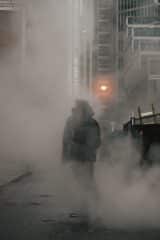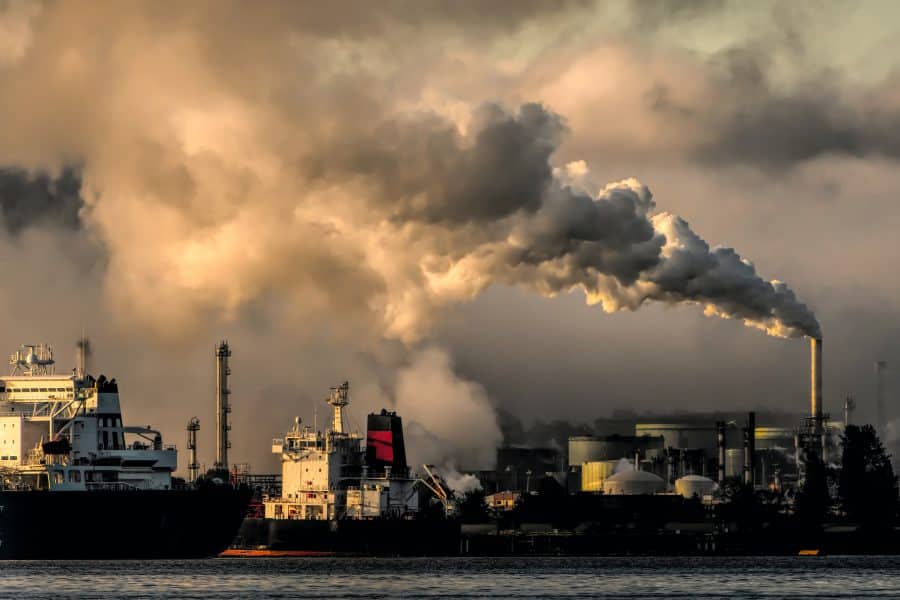Quick Facts About CFC and Smog
| A | B | C |
|---|---|---|
| Name | Chlorofluorocarbons (CFCs) | Smog, coined from smoke and fog |
| Description | A group of man-made chemicals that contain chlorine, fluorine, and carbon atoms | Smog is a type of air pollution that is caused by a chemical reaction between sunlight, nitrogen oxides, and volatile organic compounds. |
| Sources | Industrial processes, such as the production of refrigerants, solvent, aerosol propellants, and foam-blowing agents | Vehicular emissions, industrial solvents, foam-blowing agents processes, power plants, and agricultural activities |
Formation | Manufactured by humans and released through industrial processes and products | Formed when sunlight reacts with pollutants, such as nitrogen oxides and volatile organic compounds (VOCs), from the emission of cars, trucks, power plant, burning coal, and other sources. |
| Environmental Effects | Destroys the ozone layer, which protects us from the sun's harmful ultraviolet (UV) radiation. | Consists of ground-level ozone depletion (tropospheric ozone) and fine particulate matter (PM) |
| Impact on human health | Ozone depletion, which can lead to increased skin cancer, cataracts, and other health problems | Respiratory problems such as coughing, wheezing, and difficulty breathing. It can also irritate the eyes and nose and can cause heart problems too. |
| Global Impact | Contributed to the depletion of the ozone layer, leading to increased UV radiation on Earth | Contributes to global warming and climate change, affects ecosystems and biodiversity |
| Solution | Reduce the use of CFCs, use alternative refrigerants, and recycle old CFC-containing appliances | Reduce emissions from cars, trucks, power plants, coal burning and other sources of air pollution |
| Visibility Reduction | No direct impact on visibility | Reduces visibility, leading to haze and decreased air quality |
Pollution has been a growing problem that gives concern to environmentalists in the world today, leading them to seek solutions to the type of pollution that includes CFCs and Smog. The contamination of many cities’ atmosphere is evident in the reduced visibility for the public, and demands quick action to avoid the atrocities that accompanies such issues.
The type of pollution that includes CFCs and Smog is air pollution and it is common in many industrial cities, such as Hong Kong, where effluents from factories and industries get in the atmosphere, causing eye and nasal discomfort as a result of the gases they contain.
In this article we will talk about air pollution and the prevalence of CFCs and Smog as it is characteristic to it. We will also give a brief account of solutions that can be used or that is already in use to curb the effects of CFCs in the atmosphere.
Air Pollution – what it is.
Air pollution is the contamination of the atmospheric layer of the earth with materials that have negative effects on the earth, and by extension, on humans. Air pollution is caused by air pollutants, and they are usually gaseous. They are generally produced as by-products of some human activities that help to improve our livelihood; however, they also decrease the quality of life we experience in the long run.
Air pollutants are usually gotten from burning fossil, such as coal, whether for domestic cooking or for generating power. The carbon gases that are released during fossil burning rise into the atmosphere, combines with atmospheric gases, and causes the degradation of the earth atmospheric protective layer, the Ozone layer.
Air pollutants can arise as a result of natural occurrences too, as can be seen in volcanic ash that arises from volcanic eruptions. Usually, air pollutants include chlorofluorocarbons (CFCs), smoke, ash, fog, and smog, among others. Their effects include:
- causing irritation to the eyes and nose when they reach humans
- reducing the visibility in an affected area
- increasing the atmospheric temperature of the earth
- causing the degradation of the ozone layer.
Chlorofluorocarbons (CFCs)
CFCs are air pollutants that get into the atmosphere as a result of the dissociation of carbon from fossil and other carbon compounds. The carbon attaches to halogens, such as chlorine and fluorine, in the atmosphere to form a tetrahedral symmetry of chlorofluorocarbons. In some cases, they attach to halogens and hydrogen to form hydrochlorofluorocarbons, HCFCs. They are generally considered non-volatile, but they are, only that they are less volatile than their parent alkanes.
CFCs are commonly used in refrigeration and as solvent because of their high polarity, and they have application in many industrial processes that are now commercially available. They are considered safe to use because they are relatively non-toxic, have low reactivity, and less flammable, compared to methane.
However, their use has been discontinued and phased out due to their effect on the ozone layer and its depletion. They absorb heat from the atmosphere and act as greenhouse gases with stronger infrared absorption bands due to their low reactivity, causing more pronounced green house effect. As at 2018, NASA has disclosed that the hole in the ozone layer has been recovering as a result of reduced CFCs in the atmosphere.
Smog
Smog is a word coined from combining smoke and fog. It primarily reduces visibility in areas where they appear, depending on how thick they are. It usually occurs in areas where there is high fossil (coal) burning. The smoke resulting from the burning mixes with sulfur dioxide to form smog. Its effect is more pronounced in areas that are densely populated and negatively imparts the air quality of such areas. It is worse during the warmer seasons as there will be no vertical air circulation.

Some of the effects of smog include:
- Reduced visibility that may cause accidents or reduced or no traffic, which consequently affects the economy.
- Inflammation of breathing passages, that is, the lungs.
- Decreasing the working capability of the lungs
- Coughing and wheezing
- Shortness of breath
- Exacerbates medical conditions such as asthma, emphysema, bronchitis, and other lungs and heart conditions.
Smog is prevalent in cities that have hilly or mountainous geological features.
Controlling the quantity of CFCs and Smog in the Atmosphere
As environmentalists strive to make the earth’s air quality increase and reduce the effects of CFCs on the earth, there are ways to reduce the quantity of air pollutants in the atmosphere. Some of these ways have been in effect and they have helped attain some level of healing to the atmosphere.
One of such ways is the discontinued use of refrigerants, aerosols, and solvents that contain CFCs. This has been in effect since the Montreal protocol has been signed and effective in 1989, with more than 40 countries abiding by its rules and guide. In place of CFCs and HCFCs, a non-ozone depleting substitute, hydrofluoroalkane, has been developed.
The use of coal as an energy source, especially to produce electricity has been discouraged and many countries have begun to use alternative energy sources. This has helped in reducing the occurrence of smog and improved the air quality of many countries as determined by air quality index.
Conclusion
The type of pollution that includes CFCs and Smog is air pollution and it occurs as a result of gases that escape into the atmosphere, causing the depletion of the ozone layer (CFCs) and reducing visibility (smog).

Ayomide is a fiction and non-fiction writer. A lover of science and everything mysterious that surrounds it, he seeks out new information to keep his interest alive.
The content is intended to augment, not replace, information provided by your clinician. It is not intended nor implied to be a substitute for professional medical advice. Reading this information does not create or replace a doctor-patient relationship or consultation. If required, please contact your doctor or other health care provider to assist you to interpret any of this information, or in applying the information to your individual needs.


